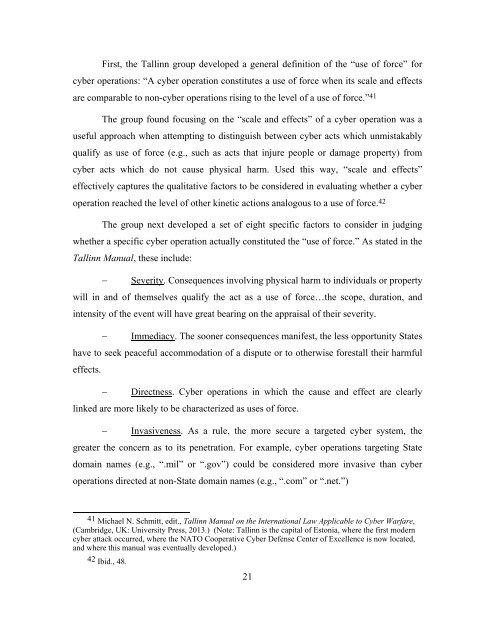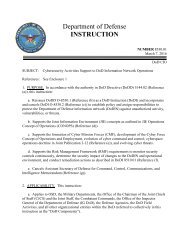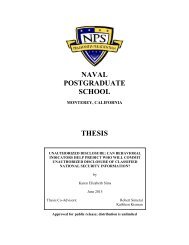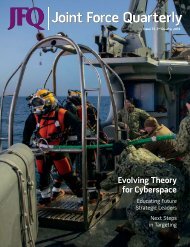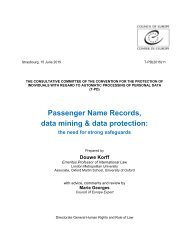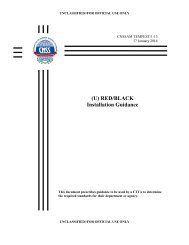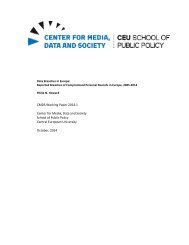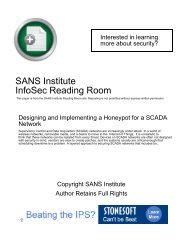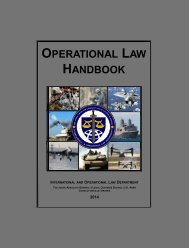SCHOOL THESIS
?view&did=788526
?view&did=788526
Create successful ePaper yourself
Turn your PDF publications into a flip-book with our unique Google optimized e-Paper software.
First, the Tallinn group developed a general definition of the “use of force” for<br />
cyber operations: “A cyber operation constitutes a use of force when its scale and effects<br />
are comparable to non-cyber operations rising to the level of a use of force.” 41<br />
The group found focusing on the “scale and effects” of a cyber operation was a<br />
useful approach when attempting to distinguish between cyber acts which unmistakably<br />
qualify as use of force (e.g., such as acts that injure people or damage property) from<br />
cyber acts which do not cause physical harm. Used this way, “scale and effects”<br />
effectively captures the qualitative factors to be considered in evaluating whether a cyber<br />
operation reached the level of other kinetic actions analogous to a use of force. 42<br />
The group next developed a set of eight specific factors to consider in judging<br />
whether a specific cyber operation actually constituted the “use of force.” As stated in the<br />
Tallinn Manual, these include:<br />
Severity. Consequences involving physical harm to individuals or property<br />
will in and of themselves qualify the act as a use of force…the scope, duration, and<br />
intensity of the event will have great bearing on the appraisal of their severity.<br />
Immediacy. The sooner consequences manifest, the less opportunity States<br />
have to seek peaceful accommodation of a dispute or to otherwise forestall their harmful<br />
effects.<br />
Directness. Cyber operations in which the cause and effect are clearly<br />
linked are more likely to be characterized as uses of force.<br />
Invasiveness. As a rule, the more secure a targeted cyber system, the<br />
greater the concern as to its penetration. For example, cyber operations targeting State<br />
domain names (e.g., “.mil” or “.gov”) could be considered more invasive than cyber<br />
operations directed at non-State domain names (e.g., “.com” or “.net.”)<br />
41 Michael N. Schmitt, edit., Tallinn Manual on the International Law Applicable to Cyber Warfare,<br />
(Cambridge, UK: University Press, 2013.) (Note: Tallinn is the capital of Estonia, where the first modern<br />
cyber attack occurred, where the NATO Cooperative Cyber Defense Center of Excellence is now located,<br />
and where this manual was eventually developed.)<br />
42 Ibid., 48.<br />
21


